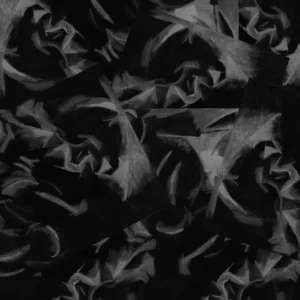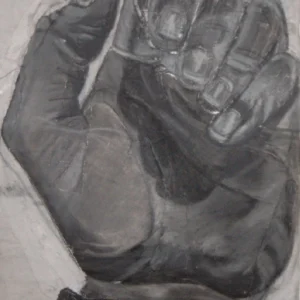Draining-1
The Unconscious Journey Through Surrealism
Draining-1’s concept is a fascinating one, drawing us into a world where boundaries between reality and imagination blur, and the familiar becomes strange. Imagine a vortex, an endless whirlpool, each drain pulling in the next, creating a cascade of spiralling forces that seem beyond our control or understanding. This metaphorical draining process, where one drain is sucked into the next, evokes the feeling of an unconscious power that is both inevitable and mysterious, much like the workings of the human mind itself.
In the realm of art, this idea of Draining-1 can be seen as a reflection of the surrealist movement, where the unconscious mind is allowed to take the lead. Surrealism is, after all, a movement born out of dreams, desires, and madness, an attempt to tap into the unconscious and to bring to light the hidden forces that shape our thoughts, our emotions, and our very perception of reality. Surrealists were not concerned with portraying the world as it appears to our waking consciousness but sought to depict the often elusive and chaotic landscapes of the subconscious, where logic is twisted, and time and space become fluid.
The Unseen Forces of the Mind
To truly grasp the notion of Draining-1 in the context of surrealism, one must first understand the profound influence of the unconscious. Sigmund Freud’s theories of the unconscious mind were crucial to the development of surrealism. Freud argued that beneath our conscious thoughts lay a vast ocean of repressed desires, forgotten memories, and unresolved conflicts. This hidden realm, he believed, could manifest in dreams, art, and even in the random associations of everyday life. Surrealists were drawn to these mysterious depths, believing that by tapping into the unconscious, they could free themselves from the constraints of rationality and discover a deeper truth about existence.
In many ways, surrealism can be seen as a kind of draining process. Just as a vortex pulls everything into its centre, surrealists sought to pull their viewers into the dark, swirling vortex of the subconscious, the only difference with the artists Draining-1 is that the end vortex is visible. The images they created often feel like they are in the midst of being pulled into something larger, something beyond our comprehension, an abyss of the mind where everything is connected but nothing is clear.
This is where artists like Salvador Dalí and André Breton come in, two figures whose works exemplify the surrealist drive to explore the unknown, to push boundaries, and to embrace the irrational.
Salvador Dalí, The Master of the Unconscious
Salvador Dalí’s work is a perfect example of this Draining-1 process. His paintings often seem to pull the viewer into a world where the normal laws of physics and reason no longer apply. Take, for example, his iconic painting Swans Reflecting Elephants (1937). At first glance, it might appear to be a serene landscape with a pair of swans gracefully gliding across a pond. But as the viewer’s eye moves to the reflections in the water, the scene begins to shift and transform.
The swans’ reflections morph into elephants, their massive forms stretching and distorting in a way that defies the logic of the physical world. The very nature of the reflection seems to be draining the boundaries between the swans and the elephants, between reality and illusion.
Dalí’s use of reflections in Swans Reflecting Elephants serves as a metaphor for the mind’s ability to twist perception and blend opposites. It’s as if the painting itself is caught in the process of draining, the surface of the water becoming a portal to another dimension where the normal rules of perception are suspended, just as the drains in draining-1, are being pulled into a portal to another dimension. Dalí was obsessed with the idea of the unconscious as a fluid and malleable space, and his reflections in this painting evoke the way the mind can distort and reshape reality, making the unconscious both an alluring and unsettling force.
In Dalí’s work, the act of draining seems to be a recurring theme. His famous The Persistence of Memory (1931), with its melting clocks draped over barren trees and rocks, conveys a similar sense of fluidity and dissolution. Time, like the clocks, seems to be draining away as with the artists work, Draining-1, leaving only a distorted, dreamlike landscape behind. The painting seems to exist in a space where past, present, and future are no longer distinct, as though the very fabric of time is being sucked into a vortex of the mind.
André Breton, The Philosopher of Surrealism
While Dalí’s work focuses on visual illusions and the manipulation of space and time, André Breton’s contributions to surrealism were more philosophical. Breton, a French writer and poet, is often considered the father of the surrealist movement. His 1924 Surrealist Manifesto laid the foundation for the movement, defining surrealism as “pure psychic automatism,” a method of expression that sought to bypass rational thought and tap directly into the unconscious mind.
Breton was deeply interested in the workings of the human psyche, and his exploration of mental illness was a significant influence on his writing and artistic philosophy. For Breton, draining the mind of its conventional thoughts was essential to unlocking the creative potential hidden in the unconscious. His fascination with madness and the way it could fracture reality was not an endorsement of chaos, but rather a search for a deeper, truer experience of existence. For Breton, the disintegration of the logical mind was a necessary step in reaching a higher form of truth.
One of Breton’s key ideas was the notion of automatic writing, a technique in which the writer would allow their hand to move freely across the page without conscious control, letting the words flow directly from the unconscious mind. This method, which could be seen as a form of draining, allowing the writer to bypass the critical faculties of the conscious mind and tap into a deeper level of creativity and insight. Breton believed that this kind of unfiltered expression was the key to understanding the hidden forces that shape our thoughts and desires.
Breton’s connection to mental illness was not just theoretical. He had a personal understanding of the blurred line between sanity and madness, having witnessed the psychological turmoil of those around him during the tumultuous years of early 20th-century France. The surrealists were not afraid to confront the darker, more irrational aspects of the human condition, including mental illness, because they believed that these hidden forces were just as essential to understanding the full spectrum of human experience as reason and logic.
The Drain of the Everyday, Surrealism’s Embrace of the Unseen
What is truly remarkable about surrealism, and what makes it so effective as an artistic movement, is its ability to capture the sense of draining-1 that comes with everyday life. Surrealist artists did not just create bizarre or dreamlike images; they sought to expose the hidden strangeness that lies beneath the surface of the ordinary world. By embracing the unconscious and the irrational, they allowed us to see the world in a new light, as if the very fabric of reality were constantly on the verge of being sucked into some larger, unknowable force.
One of the techniques surrealists used to convey this sense of the uncanny was the juxtaposition of unrelated objects. In Dalí’s The Great Masturbator (1929), a disembodied face floats above a barren landscape, its features distorted and unsettling. The figure seems to be in the process of draining away, its contours blurring into the surrounding environment, as if it is dissolving into the mind itself. Similarly, in works like The Elephants (1948), Dalí’s bizarre and dreamlike depictions of animals and landscapes create a sense of the world being caught in the process of being drained, as though something vital and invisible is pulling everything toward an unknown destination.
Surrealism’s exploration of the unconscious mind also led to a deep interest in the symbolism of dreams. Dreams, for surrealists, were a direct pathway to the unconscious, where the normal rules of logic and reason were suspended. By representing the fragmented and surreal nature of dreams, artists were able to create images that seemed to draw the viewer into a vortex of meaning, where each symbol could be interpreted in countless ways, yet none could fully explain the truth of the dream experience. Dreams, like the unconscious mind itself, are constantly shifting, Draining-1 our conscious thoughts and leaving us with fragments of images that seem to speak to something deeper and more mysterious.
Surrealism as a Form of Liberation
At its core, surrealism is about freedom, the freedom to explore the depths of the unconscious, to break free from the constraints of rational thought, and to embrace the irrational and the unknown. The act of draining the conscious mind of its preconceived notions is, in many ways, an act of liberation. For the surrealists and the artist’s Draining-1, this was not a descent into chaos, but rather a pathway to greater understanding and creative expression.
By allowing the unconscious to take control, surrealism sought to liberate the artist and the viewer from the restrictions imposed by society, culture, and rationality. In a world that often seems rigid and defined, surrealism offers a glimpse of a different reality, a place where logic is bent, time is fluid, and the boundaries between the real and the imagined are forever in flux. It is in this space, where the mind is free to roam without restrictions, that the true potential of the human experience can be realized.
You can commission a custom art piece in your choice of colour (subject to availability), adding a personal touch that reflects your unique story and experiences. Each artwork is carefully crafted, ensuring that no two are ever the same, just like the moments they capture. This process not only creates a meaningful connection between the artist and the patron but also highlights the individuality of each person’s journey through time.
The more information you provide, the better we can tailor the piece to your vision. Please note that commissions typically take between 2 to 6 weeks to complete.
Thank you for looking
Check out my other works here at https://lyn-5818.canvy.art/






Reviews
There are no reviews yet.